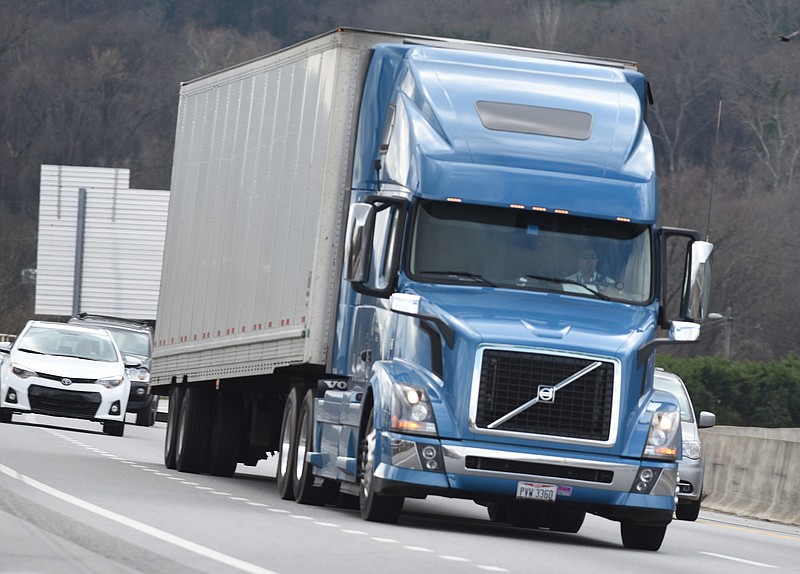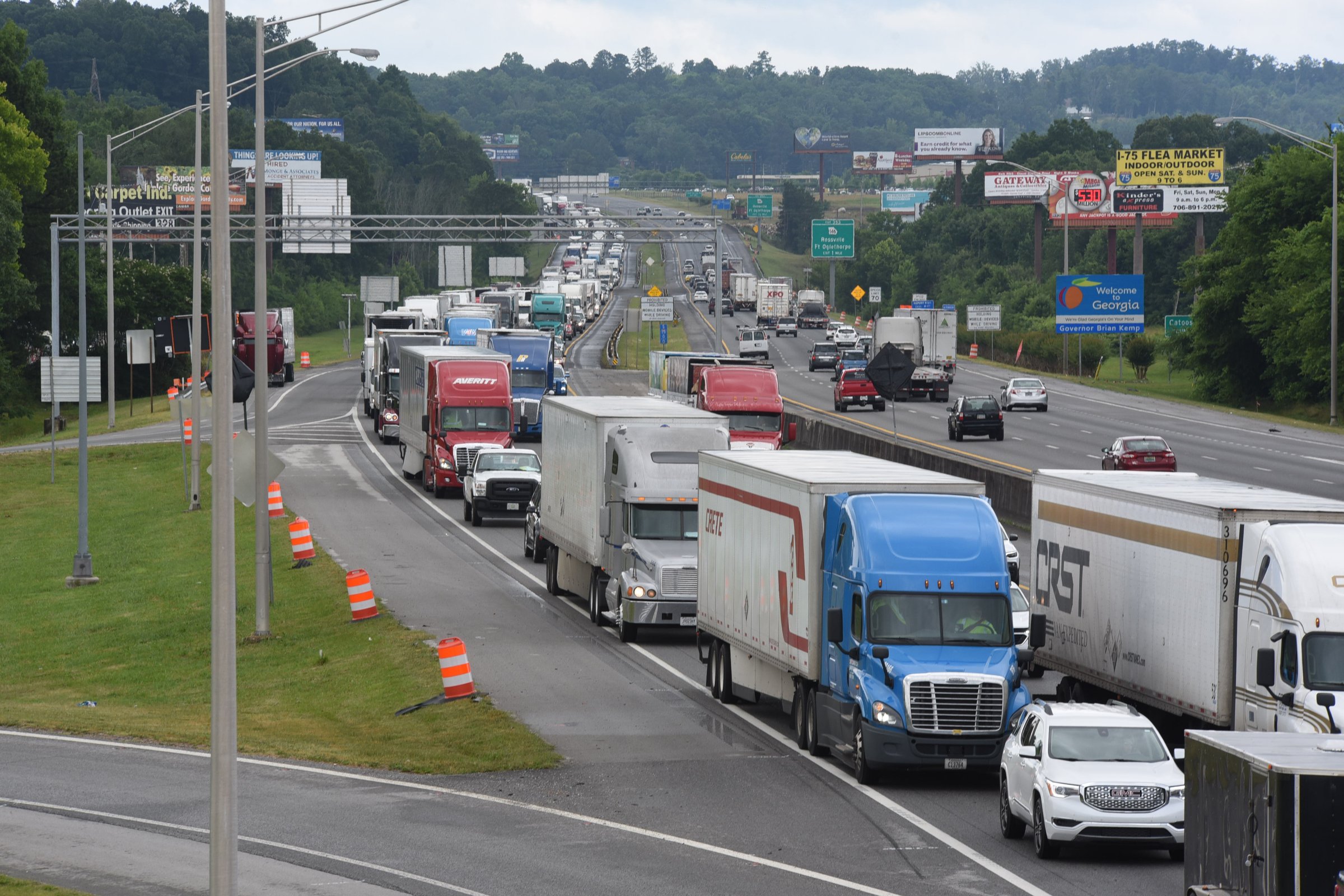When Rob Hatchett left Covenant Transport last year to start his own advertising firm to help carriers find and hire more truck drivers, trucking firms were scrambling to find enough drivers to meet their freight demand.
But the driver crunch appears to be easing this year, at least for now. Last week, Hatchett said three different carriers he met with said all of their truck routes are now full.
"Six months ago when we started SeatMyTrucks, I never thought I'd be writing about full trucks because considerations on driver shortage dominated the headlines," Hatchett said in a blog on the recruiting dilemma for some trucking firms.
The shortage of truck drivers appear to be easing - at least for now - due to a slower freight market and a rising pool of women, minorities and other workers becoming truck drivers, according to a new labor study released Wednesday by the American Trucking Associations.
Last year, the shortage of truck drivers across America rose to a record high of 60,500 workers. This year, the shortage is expected to shrink to 59,500.
But Hatchett and ATA economists still foresee the shortage of drivers to worsen over the next decade due to the aging workforce and the planned retirement of so many existing drivers.
"The forecast for a decrease this year is due to a couple of reasons," said Bob Costello, chief economist and senior vice president of the American Trucking Associations. "First, the freight economy is slowing from the torrid 2018, with declines in freight in some sectors. Second, with so much emphasis put on the driver shortage by the news media last year, the driver pool increased. When you couple that with the flat or decreasing volumes expected this year, the shortage falls back slightly, but will still be at the second highest level on record."
Hatchett, who has worked in driver recruitment at both Covenant Transportation and Seat MyTrucks, cautioned against getting too sanguine about the labor market.
"Driver applications are up right now and a lot of trucks are full," he said. "But we know that is a blip and a momentary thing because freight activity is down right now, but that won't last."
One of the largest factors for the predicted shortage of drivers in the future is the rising average age of America's 3.5 million truck drivers.
According to surveys by ATA, the average driver age in the for-hire over-the-road truckload industry is 46 years old. Other trucking sectors have an even higher average age, like less-than-truckload and private carriers.
Over the next decade, Costello estimates the trucking industry will need to hire roughly 1.1 million new drivers, or an average of nearly 110,000 drivers a year. Replacing retiring truck drivers will account for 54% of that hiring, while the growth in the industry will account for another 25% of new driver hires.
The industry also has historically struggled to attract all segments of the population as just 6.6% of truck drivers in 2018 were women. That percentage hasn't changed much historically, ranging from 4.5% to 6.6% over the past 18 years, according to ATA surveys.
Trucking firms are attracting more minorities to get behind the wheel of a truck. In 2018, 40.4% of drivers were minorities, which has jumped 13.8 percentage points from 26.6% in 2001, ATA said.
If nothing changes in the long-term trend line over the next decade, Costello predicts the driver shortage could reach 160,000 unfilled jobs by 2028.
"We are not saying that the shortage will reach that level; instead, this is more of a warning to the industry and the broader supply chain of what could happen if things don't change," he said. "If the trend stays on course, there will likely be severe supply chain disruptions resulting in significant shipping delays, higher inventory carrying costs, and perhaps shortages at stores."
Because trucks account for 71.4% of all tonnage moved in the U.S., ATA said it is difficult to shift much freight to other modes of transport like rail, water or air.
In response to the shortage of drivers last year, driver pay and benefits were boosted by many carriers in 2018 when the shortage reached its highest level ever.
Hatchett and Chattanooga's major truck carriers have been working to recruit more people into trucking, which pays long-haul truckers more than $55,000 a year, on average, for those who complete a 4- to 12-week truck driving training school and train with veteran drivers in the field during their first year of driving.
"We know that we are in a long-term battle for professional drivers," said Joey Ballard, senior vice president of human resources and driver recruiting for Covenant Transport Services. "For Covenant, one major key to attracting and retaining these drivers is our ability to offer various driving options that meet their current and changing needs. Our offerings include local, regional, team, solo and dedicated opportunities throughout the United States. This strategy also provides many career advancement opportunities which we believe is vital to help combat the ensuing driver shortage."
At U.S. Xpress Enterprises, one of the largest long-haul trucking companies in America, the company added driver development programs, college scholarship aid and targeted military recruitment efforts to fill its vacancies.
Danna Bailey, communications vice president at U.S. Xpress, said the company last September rolled out "Full Ride," a first-of-its-kind scholarship program to ensure that U.S. Xpress drivers and their dependents have the option to go back to school without the financial debt. In May, U.S. Xpress expanded the program to include diesel technicians and today we have roughly 200 drivers, technicians and/or their dependents enrolled.
"Over the course of the last year, we also rolled out a new multi-platform ongoing Professional Driver Development program to ensure new and existing drivers have the knowledge, skills and abilities necessary for a lifetime of and millions of miles of success with U.S. Xpress," Bailey said.
Contact Dave Flessner at dflessner@timesfreepress.com or at 757-6340.


